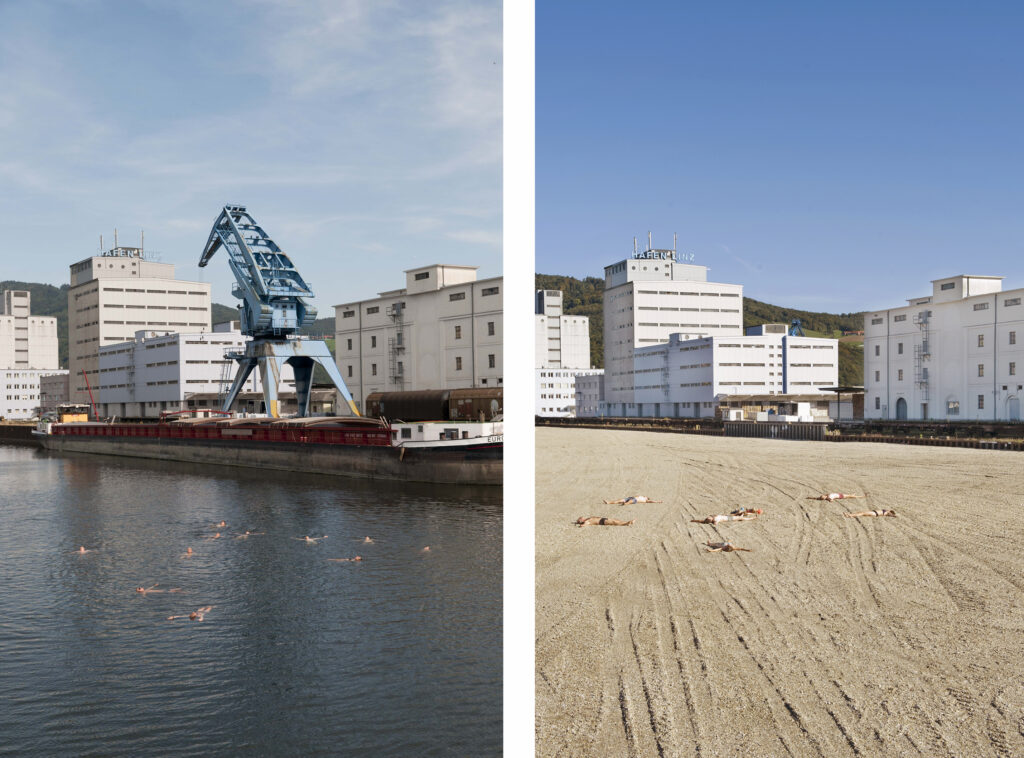

In their 2010 architecture diploma thesis [Schwemmland], Christoph Wiesmayr and Bernhard Gilli dedicated themselves to the old and new “Schwemmland” in the eastern part of Linz – and in a methodical mixture turned their attention to the urban peripheral zones, the urban and economic history, the repression of the Danube and the diverse intermediate spaces of a city that has neatly separated itself from its river.
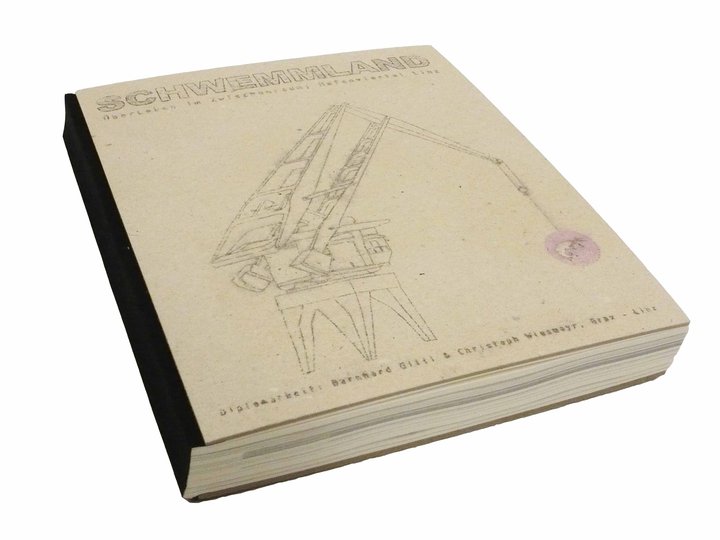
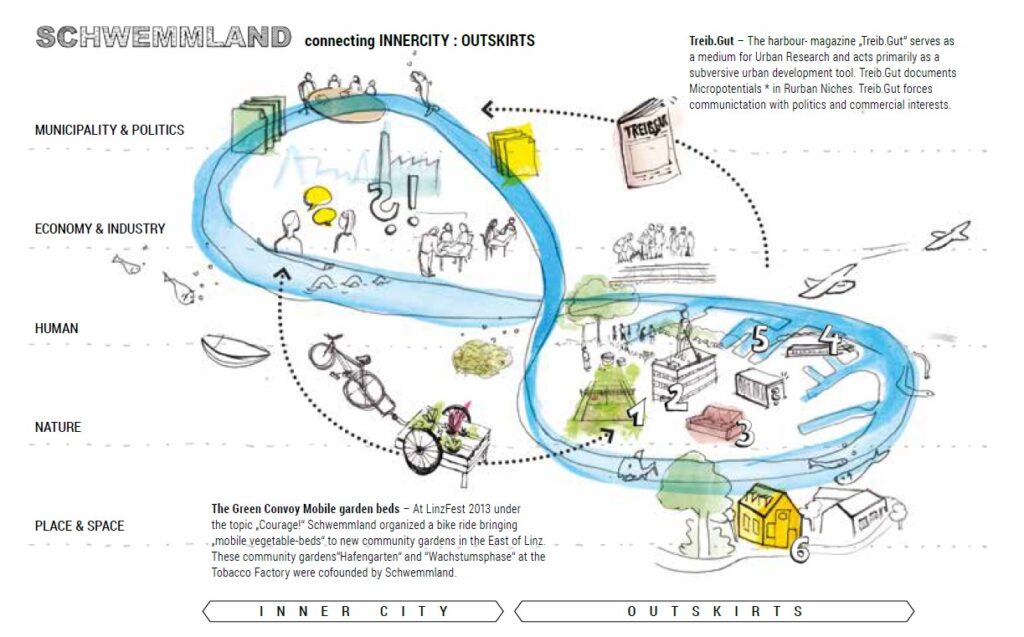
Schwemmland. In the sense of the two authors, the working title [Schwemmland] is a transformation term that stands for change in a very broad sense: In many designations, the east of Linz stands for a zone in constant succession that has transformed from the former floodplain landscape with agricultural cultivation into the economic-industrial heart of the city. The name [Schwemmland] was used for the first time by Christoph Wiesmayr and Bernhard Gilli as part of a singularly organized “Rurban Workshop” in 2008, which even then was intended to draw attention to the unnoticed peripheral and intermediate zones of city, countryside and river. In other words, to areas where the main player in shaping the landscape is no longer the river, but man and his industry. In contrast to the former floodplain of the Danube, a new “economic alluvial plain” of industry, trade, traffic and flows of people has emerged – including urban energy and waste management, which washes up consumer goods at a constant frequency.
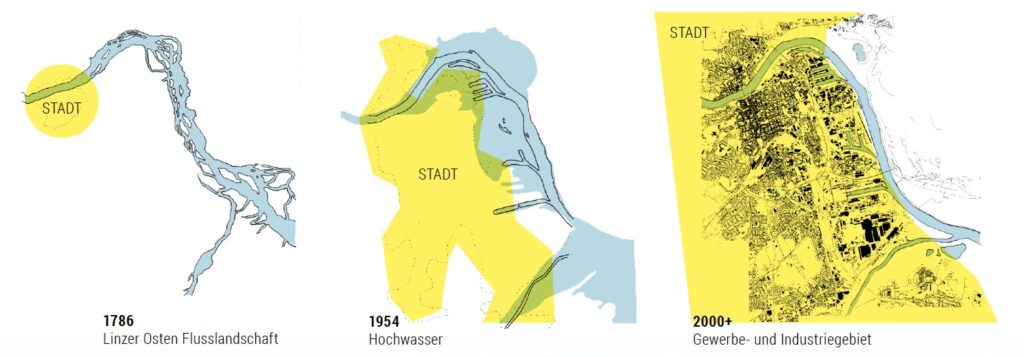
Ruderal industrial area. It is no exaggeration to say that the interventions in the east of the city have been massive, over long decades, and that it is a highly built-up, highly regulated, highly sealed zone that is under enormous economic pressure. As Wiesmayr explains at the beginning of the tour, there is still a “register of suspected contaminated sites” that manages the contaminated sites of the past. We then walk through industrial zones and wetlands, which are actually wildly overgrown industrial landscapes, to the Danube and back along the Danube embankment. There are many interesting stories to be told, from the new plants and animals that have moved into the industrial zones, from the now quasi-Asian Danube mussels to the edible, but unintentionally washed in, all-displacing American signal crayfish in the Traun-River, from leisure activities for Linzers to people who consciously want to live on the Danube-River for longer periods, at least temporarily “dropping out” here.
Rurban Niches. Or where, in the jargon of the work, other “ruderal niches” or “time windows” open up, ordinary, unusual ones – often perceived as problematic or actually tragic by the central society; or at least with melancholy nuances of disappearance. To this end, the authors have drawn up 17 “Rurban Niche Maps” with three categories: “Ruderal Phenomena”, “Individual Appropriations of Space” and “Time Windows”. The carefully systematized work [Schwemmland] is able to provide precise information about observations made, facts compiled, traces recreated, history and stories, structural connections, atmospheric approaches, urban identities, and so on.
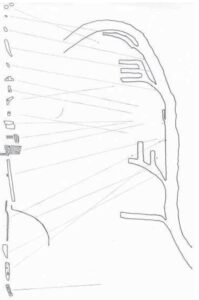
“Nischenmapping” Diplomarbeit Wiesmayr/Gilli, 2010
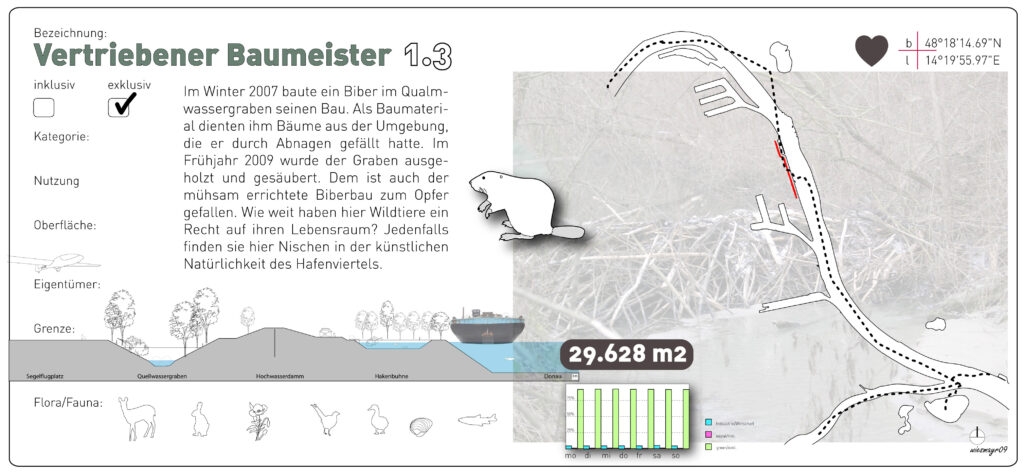
“Nischenmapping” Diplomarbeit Wiesmayr/Gilli, 2010